Installing the Pardot plugin on your WordPress website allows you to harness the power of Pardot automation on your website without the use of code. You can build your forms in Pardot, create actions and automations based on form completions on your site, right from Pardot. Additionally, if you have a database with clearly defined attributes, you can begin to tailor the content on your website based on attributes such as roles, industries, and titles.
Imagine having the Pardot personalization and automation capabilities on your website? You can with the Pardot plugin, enhancing the end-user experience further.
Technically Speaking:
The benefit of using the Pardot plugin is the ability to add forms and dynamic content to your WordPress website without the use of code. In order to install the plugin, you will need to be a WordPress administrator. You will also need to be on a Pardot edition with API access. Additionally, if your organization has a Salesforce administrator you’ll want to coordinate the creation of the connected app in Salesforce.
Why now? Pardot user authentication changes
Pardot has had its own dedicated login screen – until now. Pardot user authentication will be discontinued (as of February 15, 2021), when all Pardot users will be required to use the Salesforce SSO in order to login and access Pardot. In short, your Pardot only credentials will no longer work.
Read more: What You Need to Know About Pardot Authentication (before Feb 15, 2021)
This is especially important if you are using the Pardot API for any integrations, such as the Pardot plugin on your WordPress website. If you previously installed the plugin, you will need to go back and change the your credentials as well as create a Salesforce app in order to continue to use the Pardot plugin. I’ve been through this process, and have outlined the steps below for you to update your credentials with the Pardot plugin.
Step 1: Download the Pardot Plugin to WordPress
1. Log into WordPress.
2. Navigate to the Plugins section.
3. Click on ‘Add New’.
4. Search for ‘Pardot’.
5. It should look like the below, and you’ll see an install button where it says active.


6. Once you click install, navigate to the Plugins tab, locate Pardot, and click activate. Then click on the Pardot settings link. You’ll want to keep this tab open as you’re going to come back to it.
Step 2: Configure your Salesforce Connected App
1. In a new tab, log into Salesforce and navigate to the settings. Search for App Manager.
2. On the top right corner click ‘New Connected App’.
- Complete the basic information section. You don’t need to add a logo/icon as this app will not display in the app launcher.
- Under the API (Enable OAuth Settings) section you want to make sure you complete the following:
- Check: Enable OAuth Settings
- Enter your call back URL. The call back URL points users back to the Pardot plugin. Navigate back to the tab with the Pardot plugin open and copy that URL. It should look something like this: https://[YourWordpressDomainHere]/wp-admin/options-general.php?page=pardot.
3. Under Selected OAuth Scopes be sure to select: Manage Pardot Services (pardot_api) and perform requests on your behalf at any time (refresh_token, offline_access). More information here.
4. Check the box to Require Secret for Web Server Flow.
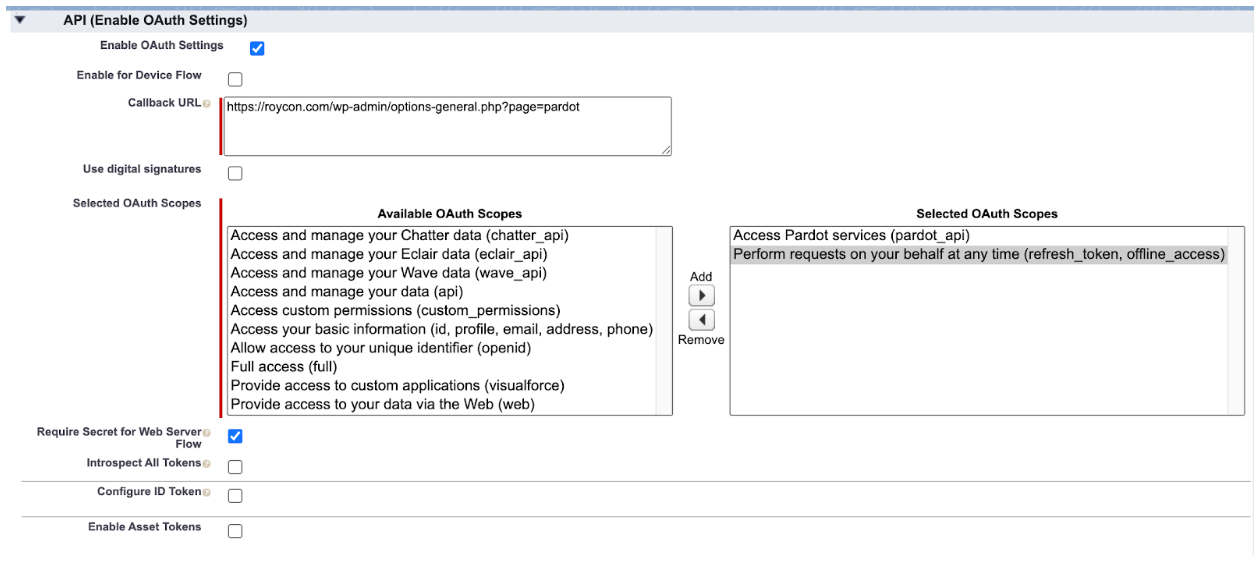

Once you complete this step, click save. Upon saving the new app the consumer key and customer secret will be generated.
Step 3: Complete the information on the Pardot Plugin.
- While keeping your Salesforce tab open, navigate back to your WordPress tab with the Pardot plugin.
- Change the authentication type to SSO.
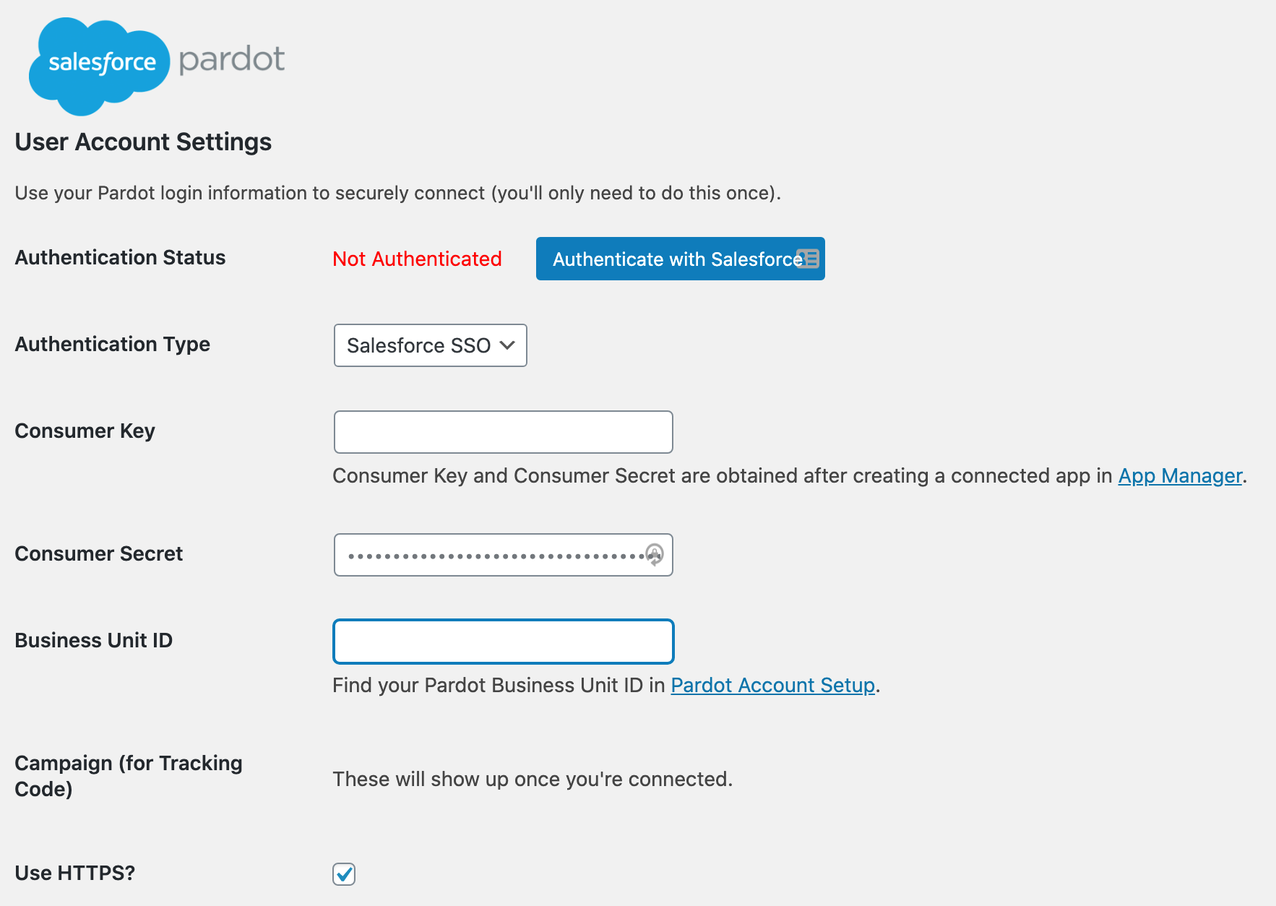

3. Switch back to your Salesforce tab with your new connected app, and you should see your consumer key and customer secret. Copy and paste those values. If for some reason you closed the tab, or someone else created this App for you, you can find this by going to settings > App Manager > Find your app and click view.
Note: If you click edit you won’t see these values, you must click view.
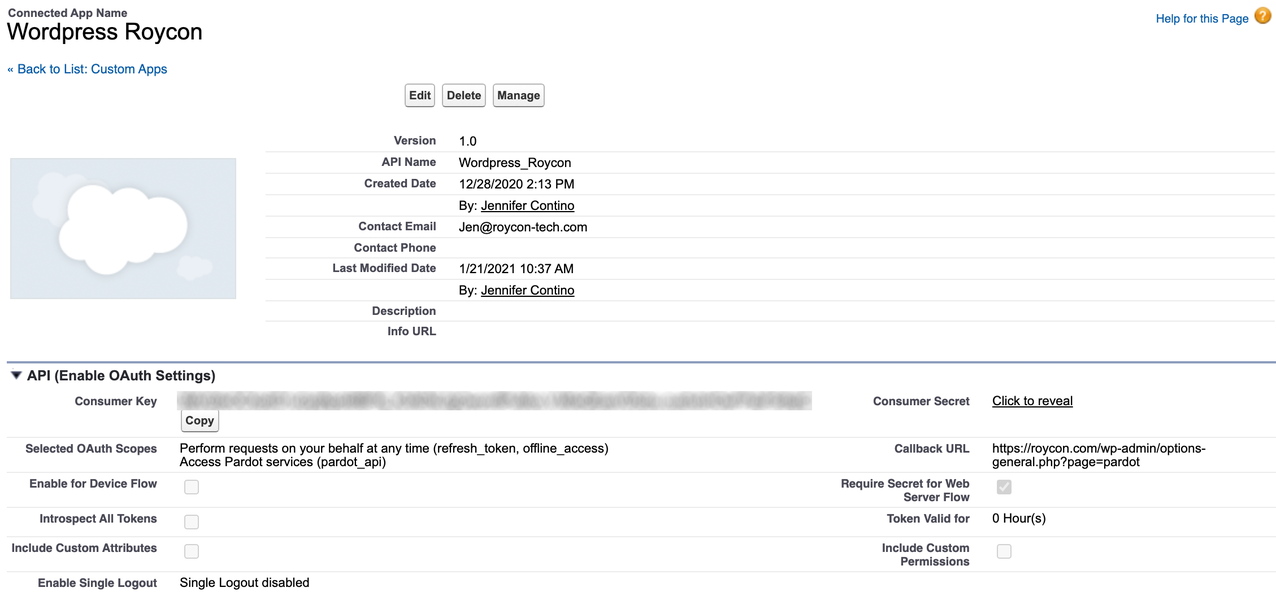

4. Locate your Pardot business unit ID. To find the ID navigate to your Salesforce settings, search for Pardot > Pardot Account Setup > then you’ll find the ID value. Enter the value into the WordPress Pardot plugin. Once you’ve completed all the information, click save settings.
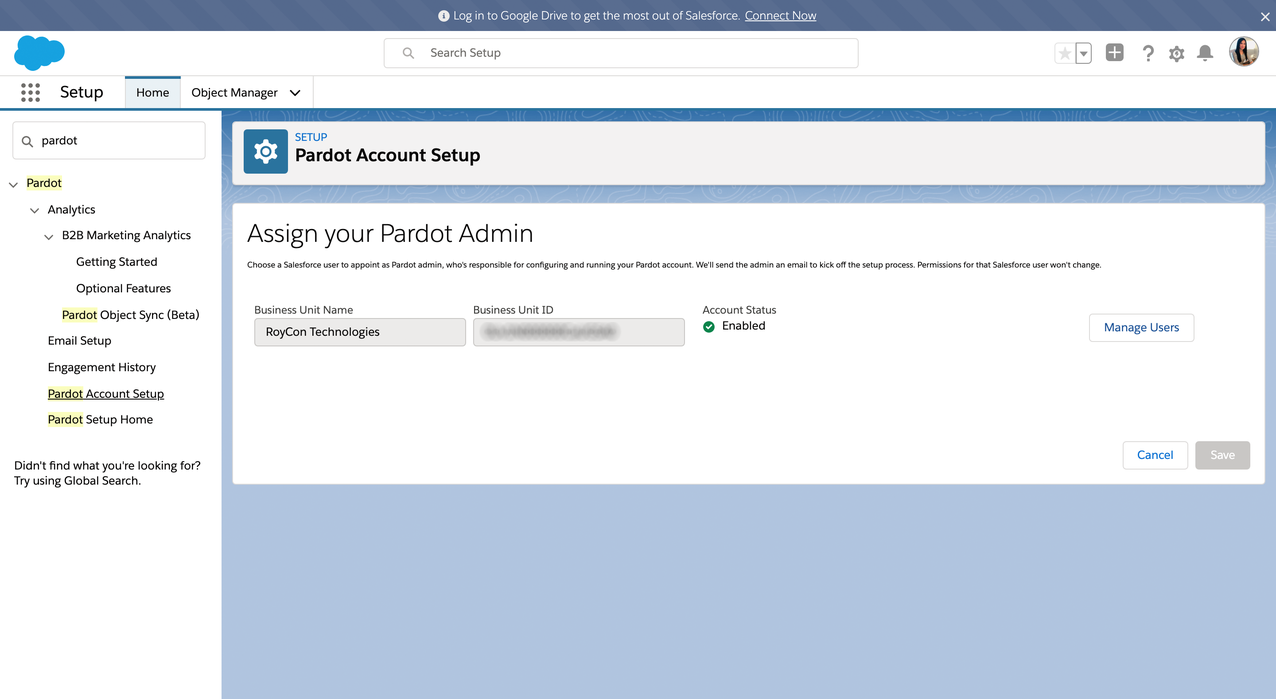

5. Then click authenticate with Salesforce. If you aren’t already logged into your Salesforce org, you’ll be prompted to enter your credentials.
6. Once it successfully authenticates, you’ll see the authentication status turn green and it should say “Authenticated with Salesforce SSO”. From here you’ll want to select your campaign for tracking code and select save once more. You can come back to this tab at any time and change your Pardot campaign.
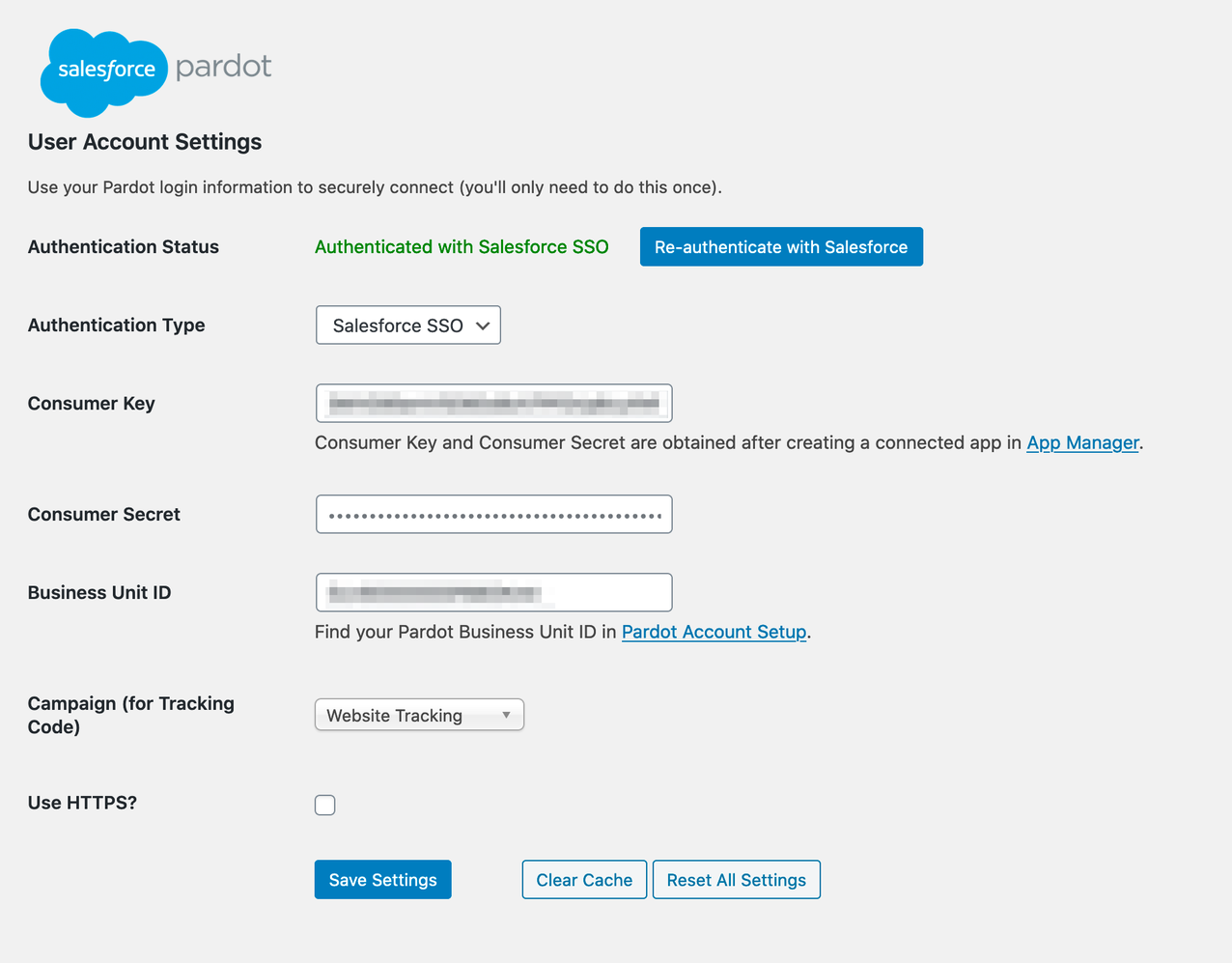

Once you have completed the installation above, a blue Pardot button will be added to your text editor. From here you’ll be able to add forms and dynamic content from your Pardot instance to your website without the use of code. When you click the Pardot button, you’ll see a window like the one below, where you can pick either your form or your dynamic content to embed on your website.


If for some reason you do not see your form or dynamic content on the list, you’ll want to go back to your Pardot plugin settings and clear the cache.
Next Steps
Now that you’ve completed the setup for your Pardot plugin on your WordPress website you’ll be able to harness the power of Pardots’ personalization and automation abilities right on your website. If you have a question or have a really cool use case you just want to discuss, you can always reach out to us here.
Comments: